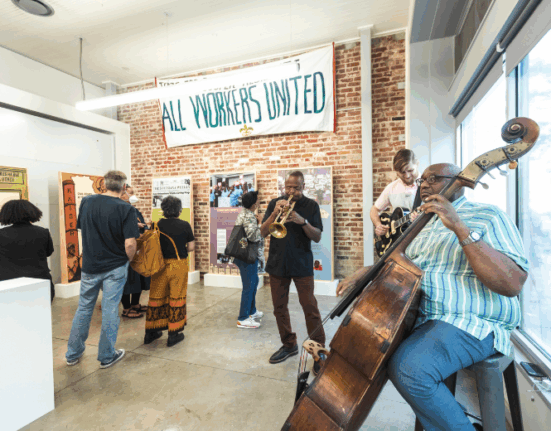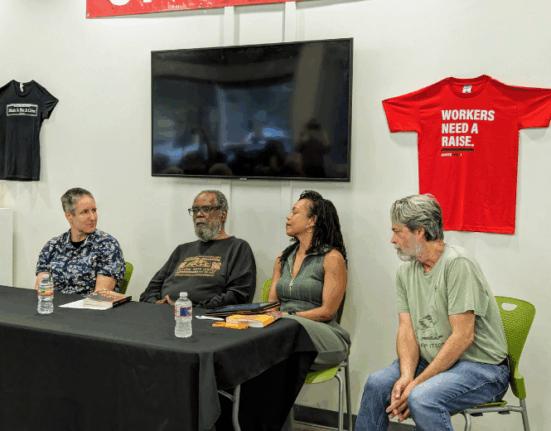My husband keeps expressing a hankering to go up to Calumet, Michigan on Christmas eve to commemorate the 73 people, mostly children, who lost their lives in the Italian Hall Christmas Eve 1913 tragedy during the militant strike against the copper bosses. People I tell about this think he’s a crazy man (it’s an 8 hour drive in good weather from where we live). I just shake my head at the prospect, but I know him as someone who senses in his heart and soul the lives and struggles of people who lived through the long Gilded Age and collectively fought for workers rights– more so than most historians I’ve known–and he’s liable to persuade us to do it. He is always mindful of the death toll of people who suffered in the mines and in the labor movement, a body count and family toll that is usually written out of American history. Maybe it’s because his grandpa was a breaker boy in Pennsylvania coal mines who went to work at a young age; the struggle of all miners and of the children whose lives were taken is something of his heritage. Like some trade union organizers, he feels deeply the connection to this history of radical traditions in the labor movement. I guess a number of labor historians would label him a dinosaur. This week for example my mailbox arrived with another attempt to rehabilitate the AFL in the issue of Labor. In the last few months, I’ve encountered the litany from historians telling me that the radical agenda was fundamentally tainted or is over, that rehabilitating the AFL is the new agenda, that Marx is irrelevant… well, it’s enough to make me consent to the long slog up to Calumet.
I was inspired to consider it, too, when watching the recent film broadcast from the Chicago PBS station Red Metal: The Copper Country Strike of 1913. A number of the people interviewed in the film, especially author Steve Lehto, bring a passion for remembering these people. I would recommend Gary Kaunonen and Aaron Goings book on the 1913 event; Kaunonen has a brief spot in the film. Labor historian Joshua Freeman suggests some context by framing this period as the “most radical moment in the history of American labor.” But it is Lehto’s passion that comes through most forcefully, and probably it’s because he has family connected to the event. It’s also great to see the profile of the mining women involved in the strike, including “Big Annie” Clemenc who exclaimed to authorities, “kill me but I won’t move,” during the events. Big Annie was determined to counter the gloom meted out by the Citizens Alliance by organizing the Christmas celebration where so many children lost their lives. At the time, newspapers were trumpeting the suffering of the children because of the strike. We’ll have a blog on the 1913 Italian Hall disaster in a few days here.
Red Metal does a reasonable job of profiling the vile intent of the Citizens’ Alliance, which operated sort of like the Koch brothers do in terms of class warfare today, but with less holds barred. The film presents the Citizens’ Alliance as a local group rather than the national force that it was at the time, and it presents the Western Federation of Miners and their leaders as scary radicals rather than as representative of a wider tradition of militant confrontation. The film largely misses the way that the strike relates to broader trends in the labor movement. At the time Colorado miners in the UMWA-AFL were fighting on similar terms and similar loss of life would result. These immigrant workers were putting themselves on the front line of the class warfare dished out by the 1 percent of the time.
Maybe we’ll be up in Calumet, but one way or another, we’ll be thinking of these people, and honoring their memory. For a while, you can view Red Metal on-line, and I encourage you to do so. http://video.pbs.org/video/2365134411/






